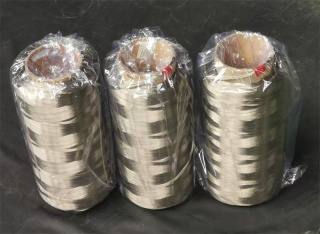Nickel Coated Carbon Fiber
Nickel Coated Carbon Fiber is an innovative material that combines the lightweight properties of carbon fiber with the exceptional conductivity of nickel. Through advanced surface metallization treatment, this composite significantly enhances its electrical conductivity—approximately ten times greater than standard carbon fiber—while maintaining the robust mechanical strength inherent to carbon fibers. This results in a weight reduction of 50%-80% compared to traditional metals, making Nickel Coated Carbon Fiber a revolutionary choice for high-performance applications.
1. Product Overview
Nickel Coated Carbon Fiber is an innovative material that combines the lightweight properties of carbon fiber with the exceptional conductivity of nickel. Through advanced surface metallization treatment, this composite significantly enhances its electrical conductivity—approximately ten times greater than standard carbon fiber—while maintaining the robust mechanical strength inherent to carbon fibers. This results in a weight reduction of 50%-80% compared to traditional metals, making Nickel Coated Carbon Fiber a revolutionary choice for high-performance applications.
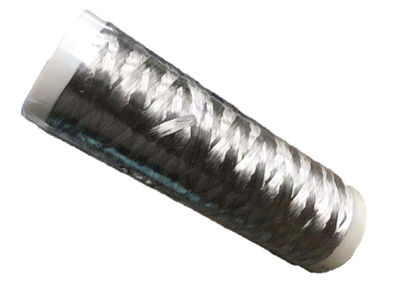
2. Applications
Due to its unique combination of properties, Nickel Coated Carbon Fiber is widely used across various industries:
● Electromagnetic Shielding: Its superior electrical conductivity makes it ideal for shielding electronic components from electromagnetic interference, enhancing device performance and reliability.
● Heating Cables: With excellent thermal conductivity and rapid temperature response, it is perfect for use in heating cables, ensuring efficient heat distribution.
● Conductive Plastics: As a filler, it improves the conductivity of plastics, enhancing wettability between carbon fiber and metal matrices, thereby increasing interface bonding strength and dimensional stability.
● Aerospace & Military: Valued for its high strength-to-weight ratio, essential for performance and efficiency in aerospace and defense sectors.
● Automotive & Electronics: Contributes to fuel efficiency in automotive parts and improved device performance in electronics through its lightweight and high conductivity.
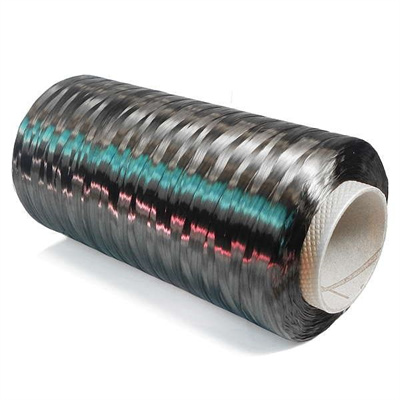
3. Features
The distinctive features of Nickel Coated Carbon Fiber include:
● High Purity Nickel Layer: Ensures consistent quality with a dense, uniform metallic coating.
● Strong Metal-Carbon Fiber Adhesion: Maintains integrity through thermal cycling, preventing peeling or degradation.
● Retained Mechanical Strength: Preserves the original high mechanical properties of carbon fibers, ensuring durability.
● Superior Conductivity: Excels in both thermal and electrical conductivity, coupled with an extremely low coefficient of expansion.
● Enhanced Dimensional Stability: Reduced thermal expansion enhances precision in engineering applications.
● Significant Weight Reduction: Offers a 50%-80% weight savings over metals, beneficial for weight-sensitive industries.
● High Mechanical Strength: Despite being lightweight, it possesses impressive strength suitable for demanding environments.
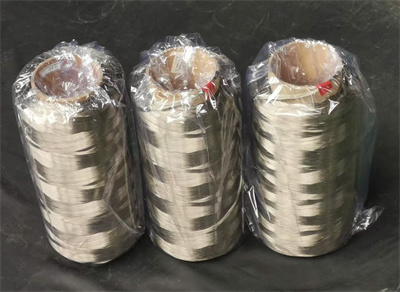
In summary, Nickel Coated Carbon Fiber integrates the best of both worlds—the lightweight, high-strength attributes of carbon fiber and the unmatched conductivity of nickel—making it a preferred choice for advanced technological and industrial applications.
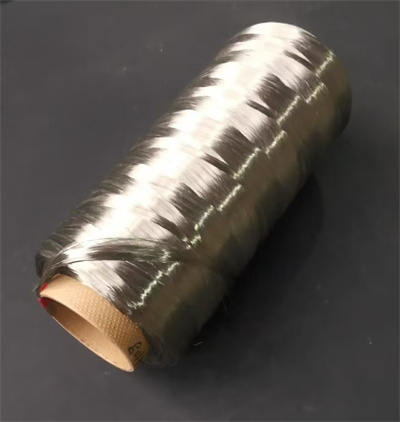
Item | Test standard | Unit | Classic value | |
Mechanical Properties | Tensile strength | ISO11566 | MPa | 3000 |
Tensile modulus | ISO11566 | GPa | 160 | |
Enlongation at break | ISO11566 | % | 1.3 | |
| ||||
Electrical property | Resistivity | QJ3074 | Ω.cm | 8.23*10-5 |
| ||||
Others | Bulk density | ISO10119 | g/cm3 | 3.2 |
Linear density | ISO11566 | g/km | 1630 | |
Tow | ISO11566 | ends | 12000 | |
Filament diameter |
| μm | 7.3 | |
Coating thickness |
| μm | 0.3 | |
Nickel content |
| % | 50 | |
Cross-sectional area |
| mm2/tow | 0.55 | |
Twist |
|
| none | |





